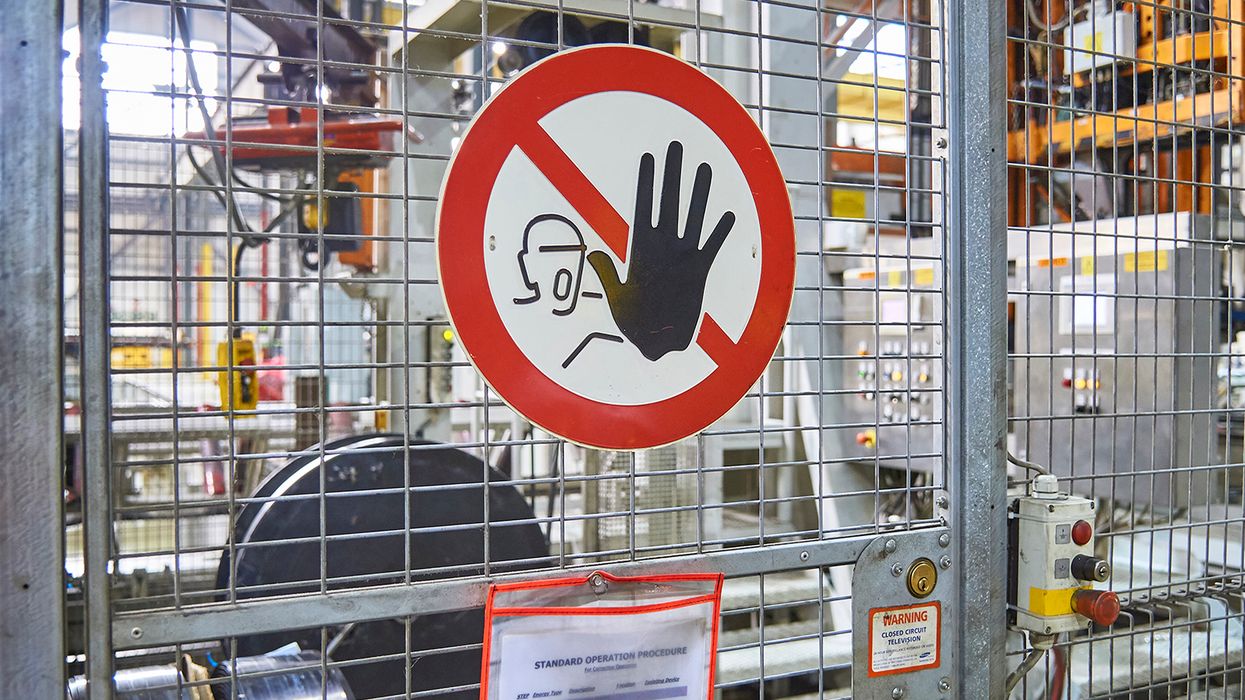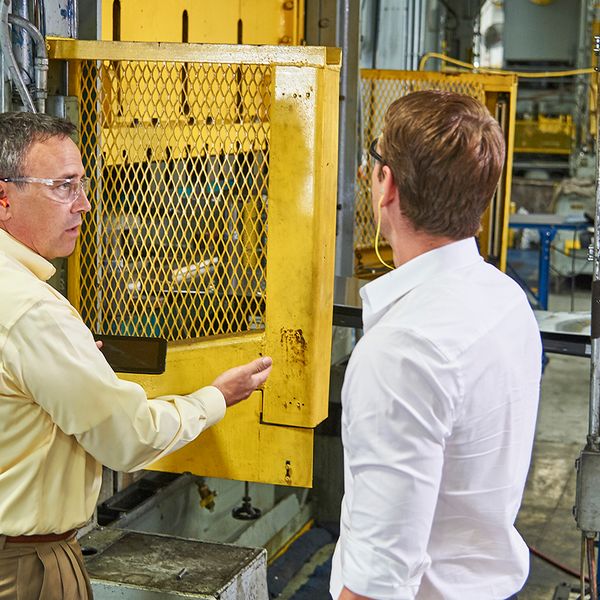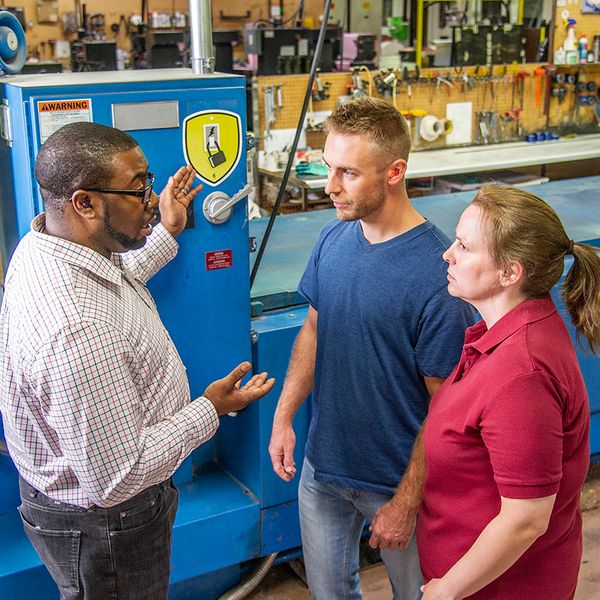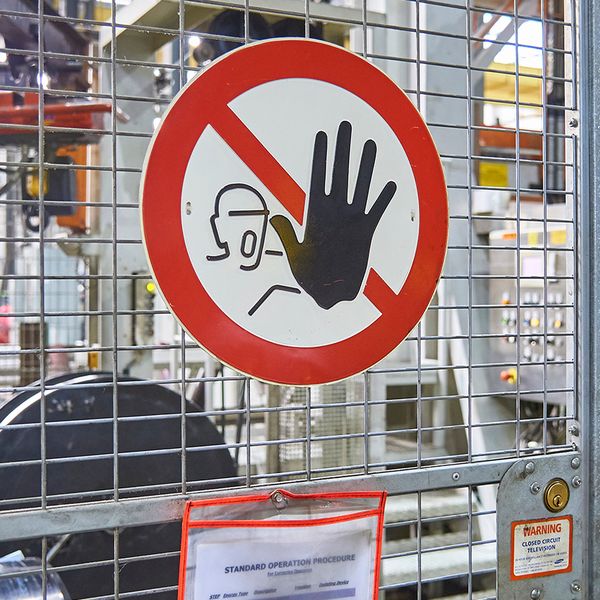So many moving parts: Are your workers protected?
When the operation of a machine has the potential to injure a worker through accidental contact, or to injure others in the vicinity, the hazards must be eliminated or controlled. OSHA’s machine guarding standard requires safeguarding of any machine part, function, or process that may cause injury.
Some machines can be positioned so that workers can’t come into contact with any hazards. This is called guarding “by location.” For example, an exposed gear higher than seven feet off the ground might not require shielding because it’s too far away from an employee during normal operation. The same may be true of moving parts shielded from employees because they’re against a wall and are not accessible.
Machine safeguards
If guarding by location isn’t possible, the machine must have safeguards. There are several types:
- Guards are barriers that prevent access to danger areas. They come in three types:
- Fixed (can’t be removed easily – these provide the most protection),
- Interlocked (shut off or disengage power when removed – these are designed to be occasionally removed), and
- Adjustable (adjust for different machine set-ups).
- Devices stop a machine or prevent it from starting until the operator is in a safe position. They’re used mostly for point-of-operation hazards and come in five types:
- Presence-sensing (e.g., light, radio frequency),
- Pullback,
- Restraint,
- Safety controls (e.g., trip wires, two-handed trips), and
- Gates.
- Automated feeding and ejection methods limit hazards associated with feeding stock into or ejecting material from a machine. These methods come in three types:
- Automated feed or ejection,
- Semi-automatic feed or ejection, and
- Robotics.
Effective safeguards must:
- Prevent contact with hazardous components during machine operation;
- Not create additional hazards, such as new nip points between guards and rotating parts;
- Be secure, durable, and resistant to tampering;
- Not interfere with normal machine operation unless necessary for protecting employees; and
- Not interfere with equipment servicing or maintenance.
What about loose-fitting clothing, long hair, and jewelry?
OSHA doesn’t specifically address this issue in its general industry regulations. However, an OSHA publication, Safeguarding Equipment and Protecting Workers from Amputations, states the following about long hair while operating grinding machines: “Instruct employees not to wear gloves, jewelry, or loose-fitting clothing while operating grinding machines and to secure long hair in a net or cap.”
Also, in a woodworking eTool OSHA says, “Do not allow workers to wear loose clothing or long hair. Loose clothing or long hair can be easily caught up in rotating parts.”
For safety reasons, many companies develop policies regarding hair length or securement for employees working around specific machines. If you determine that certain lengths of hair can create a job hazard around moving machinery parts, OSHA expects you to require workers to secure it (or keep hair short) so it’s not a hazard.
OSHA’s regulations are considered “minimum requirements” and where hazards exist, employers must do whatever is necessary to reduce or eliminate those hazards. Although there’s no specific regulation for this issue, OSHA could still cite and fine under the General Duty Clause or general machine guarding standard.
Key to remember: Workers must be protected from moving parts. This may include a company policy that requires workers to secure long hair or keep hair short when working with machinery.


















































